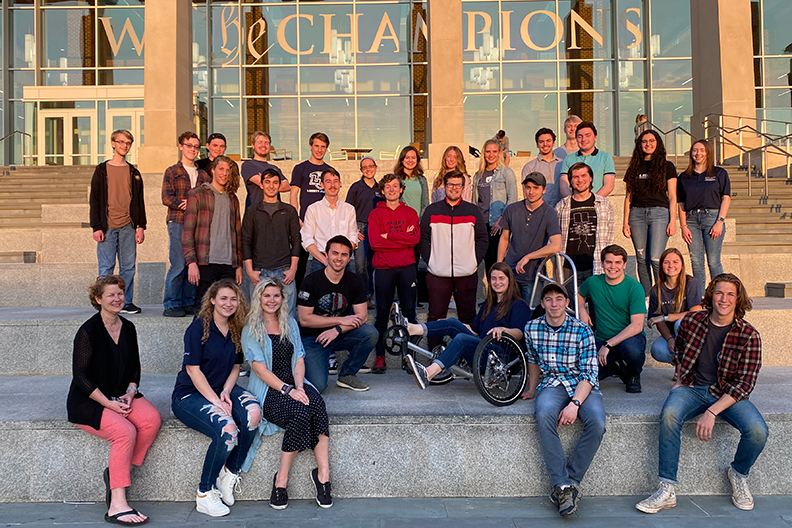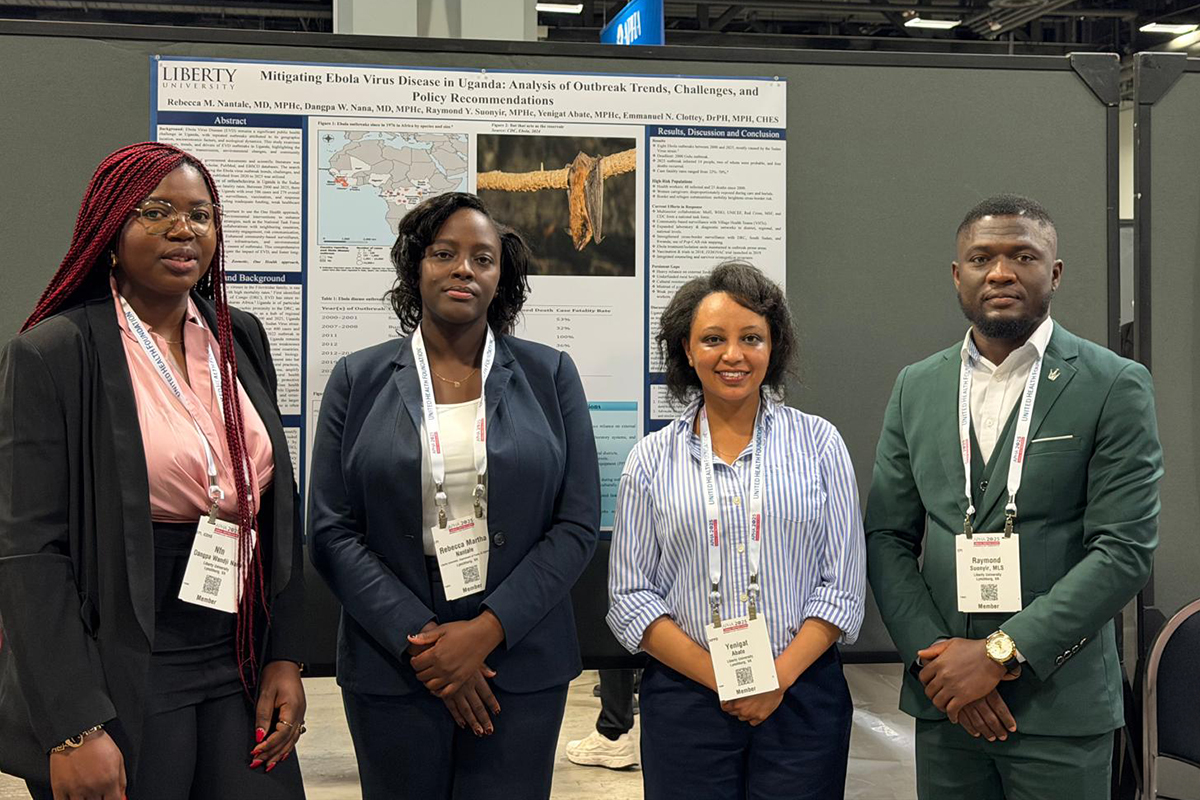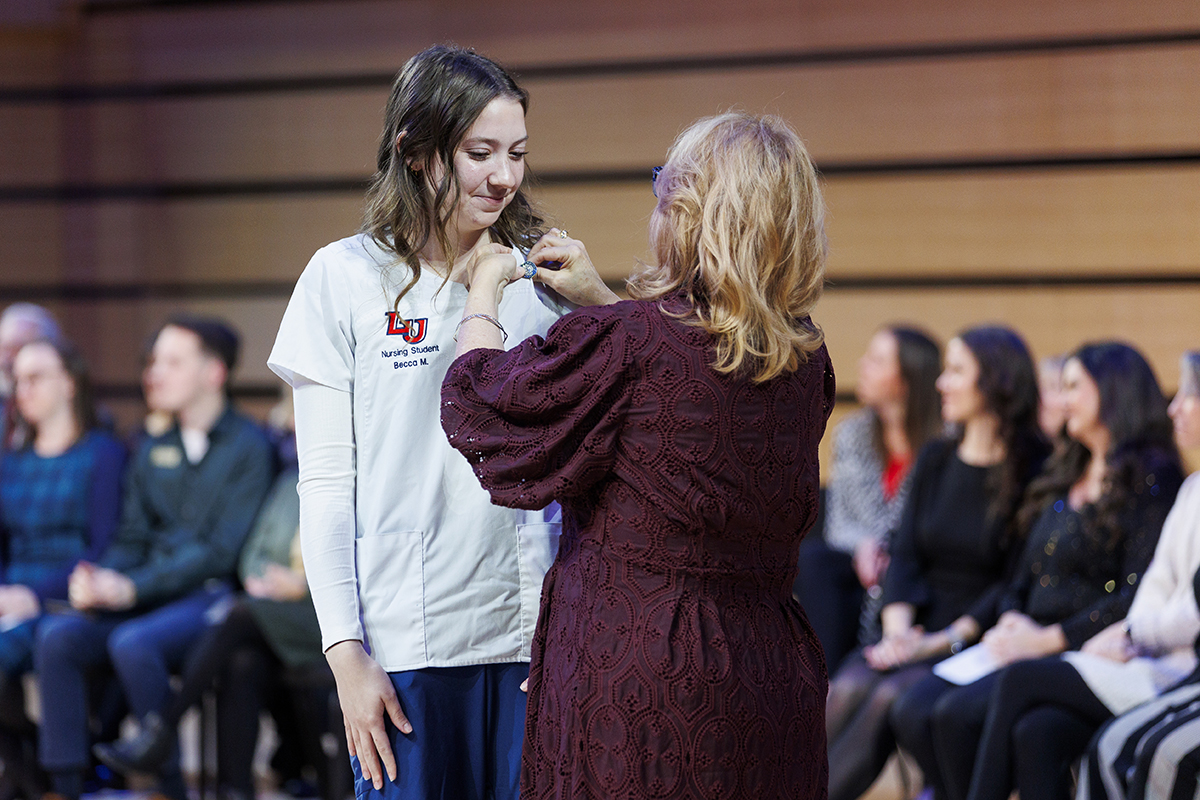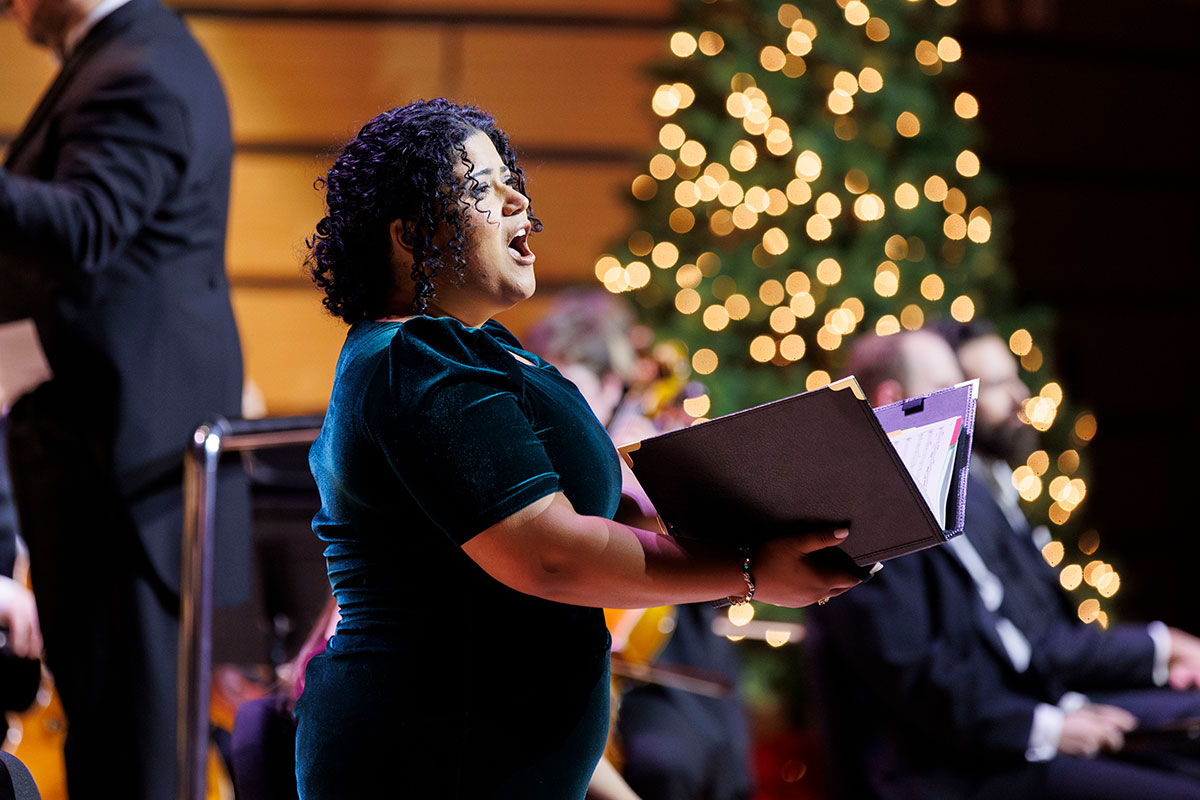Mechanical engineers fine-tune human-powered vehicle for international contest
April 30, 2021 : By Ted Allen - Office of Communications & Public Engagement

Liberty University School of Engineering students rolled out a new ride for this semester’s Human Powered Vehicle Challenge and engineered their best performance in the seven years they have entered the competition.
Liberty’s model placed fourth behind a team from Canada at first place, University of California Berkeley at second, and a model from India at third. Complete results are available online.
The annual engineering design and innovation competition hosted by the American Society of Mechanical Engineers (ASME) gives students the opportunity to network and apply engineering principles through the design, fabrication, and racing of human powered vehicles. Due to COVID-19, the racing portion of this year’s contest was canceled and teams were not required to construct a physical vehicle — computer models were accepted. But Liberty’s team opted to go the extra mile and their hard work paid off.
“We placed fifth the last two years in the E-Fest East (U.S. East Coast) competition, so this is a big jump in placement,” said Carolyn Ziebart, assistant professor and faculty advisor. “We’re trying to break into the top three (overall) to get an award, and we are so close. I’m hoping next year to take this year’s model and really make it good. I am focused on getting them a really strong mentor to give them design and analysis (critique) and to take it to the next level.”
This year ASME combined all North America, South America, and India E-Fest events into one international competition with all entries submitted digitally. The contest, which awarded prize money to the top three overall winners, consisted of a critical design review report, online presentation, and an analysis and an innovation report earlier in the semester. Teams gave a live virtual innovation presentation on April 3 and awards were announced this past weekend.
According to the ASME, the competition is rooted in the idea that human-powered vehicles are the most common form of transportation in many parts of the world, so teams are challenged “to use practical and sustainable engineering principles to design, fabricate, and operate a vehicle that could be used to commute to work or even transport goods.”
Liberty’s lead engineering students were Patrick DaCosta (design), J Wold (manufacturing), and Virginia Corsini (project manager). Josh Ingram provided much of the welding on the project.
DaCosta, a mechanical engineering student, said the primary improvement made on this year’s model was cutting its weight nearly in half by shifting from a steel to an aluminum frame.
Resembling a recumbent bicycle, the vehicle is foot-powered and weighs in at just over 30 pounds, compared to previous models that tipped the scales at close to 60 pounds. It is designed to carry a driver as tall as 6 feet and weighing between 150-160 pounds.
“(Aluminum) was an easier material to work with as far as manufacturing, though not as easy to weld,” he said. “Next year, we will be integrating more carbon fiber components into the design, because that is even lighter and stiffer than aluminum. Designing the frame for the next iteration of the vehicle will make it better than this year’s, more ergonomic.”
DaCosta said the fact that Liberty’s team actually built a vehicle gave it an edge over many of its competitors, who only presented computer models.
“We had some unforeseen issues in the manufacturing of it, but can learn from what did not work well for next year, when the same basic design will be used and tweaked to account for a few design flaws,” DaCosta said. “Overall, this year’s design utilized a lot better engineering concepts than in previous vehicles, optimizing design by reducing the number of zero force members in the frame that take up weight and space and properly triangulating measures so that the frame is more rigid.”
Many of the current team members who played secondary roles this year will be taking leadership initiative starting over the summer and leading into the fall semester.
“We will hand off the design to lowerclassmen next year so that there’s a transfer of knowledge and leadership because we always want new ideas brought to the table,” said DaCosta, who will serve in an advisory role over the summer before taking a new leadership role on the Liberty Motorsports Formula Society of Automotive Engineers (SAE) competition team, which constructs a Formula racecar.
Liberty School of Engineering students showed off the three competition vehicles they have worked on this year — the HPV, racecar, and a Baja off-road vehicle — on campus on April 8 during College For A Weekend.
The Formula racecar team presented their vehicle, which the group has refined over the past three years, to a panel of engineers from their project sponsor, Hendrick Motorsports, in Charlotte, N.C., earlier this semester. They will travel to Las Vegas for a national Formula SAE validation competition from June 16-19, when they will test the vehicle’s speed, acceleration, and agility on an autocross course.


